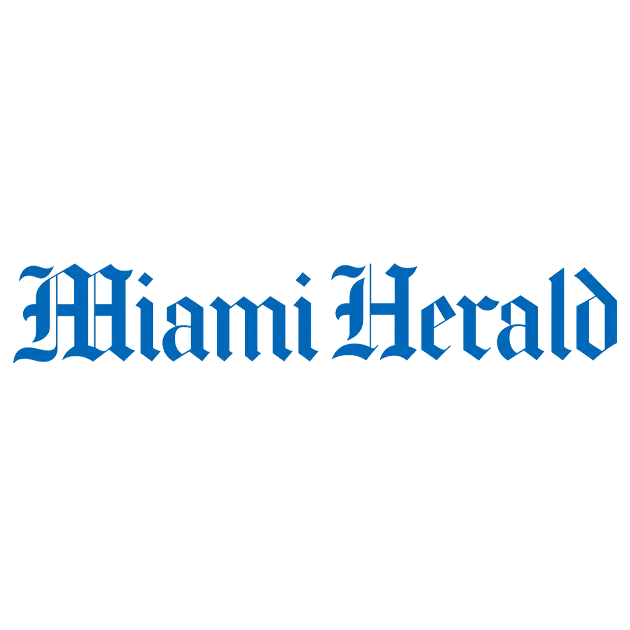
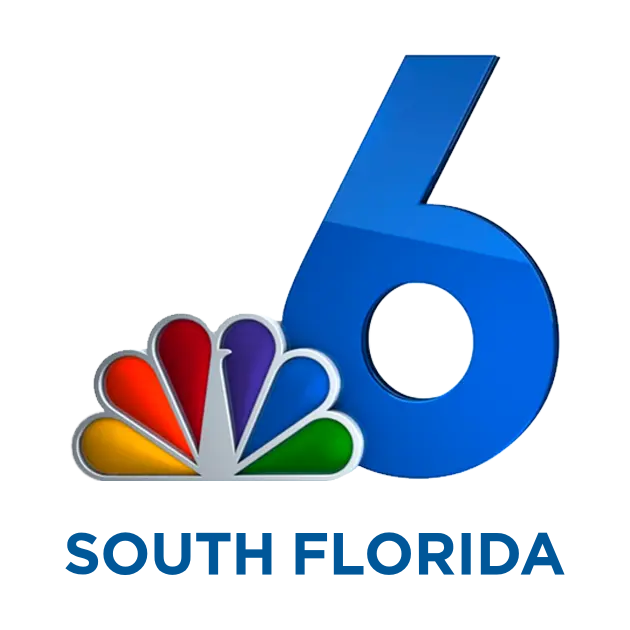

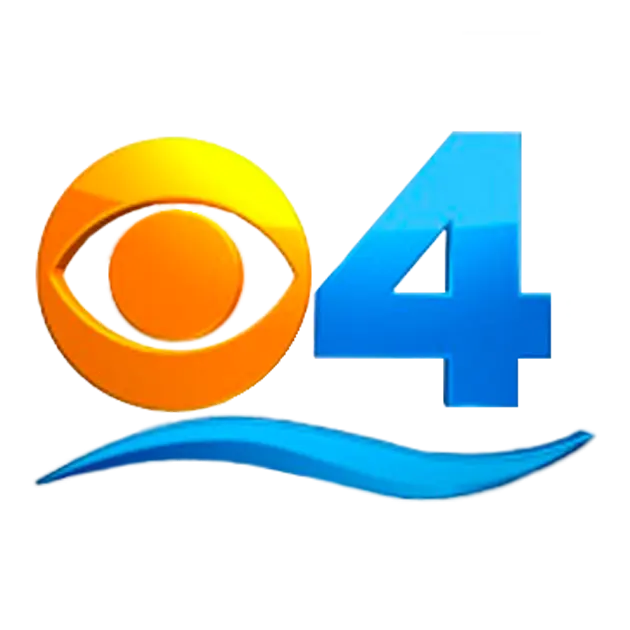
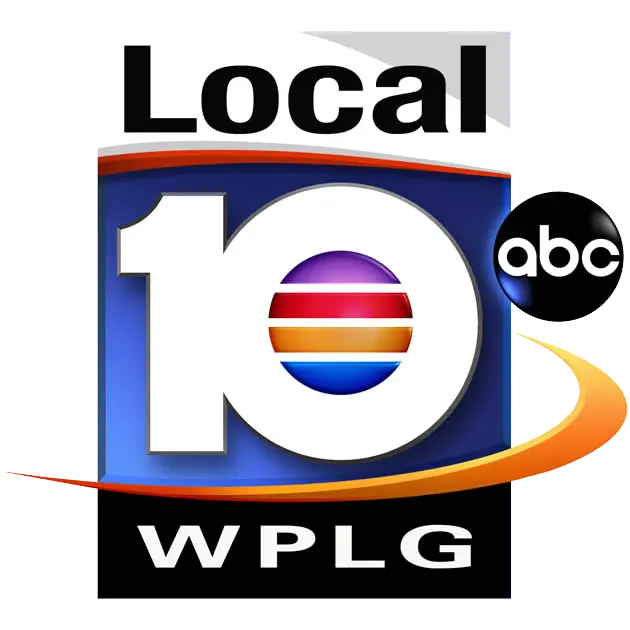










Miami’s vibrant equestrian community faces unique risks every time they mount on horses. According to the CDC, horseback riding results in approximately 50,000 emergency room visits annually in the US.
Injuries because of horse riding accidents impact more than just physical health. They can take a toll on the emotional well-being and lead to financial hardships. Medical bills mount quickly, while lost wages and ongoing care create additional pressure on accident victims and their families.
That’s where the services of Miami horse riding accident lawyers are essential. They can help in navigating Florida’s equine laws and personal injury statutes to protect riders’ rights.
At Madalon Law, we understand the nuances of horse riding accidents in Miami and the specific challenges riders face in pursuing compensation.
This guide will examine crucial aspects of horse-riding accidents and your legal rights under Florida law. You’ll also learn how an experienced Miami horse riding accident lawyer can help you secure the compensation you deserve.
Horse riding creates memorable experiences for riders. But it also brings inherent challenges and risks that every rider must fully understand. Even with proper training and safety measures, horse riding accidents can occur.
So, before mounting up, it’s crucial to understand what can go wrong and how to protect yourself. Let’s delve into the realities of horseback riding safety and examine the factors that contribute to riding accidents.
Horse riding accidents frequently occur in high-traffic equestrian areas. Knowing about these location-specific risks helps riders, handlers, and facility managers implement appropriate safety measures.
Each setting requires its own set of precautions and protocols to minimize accident potential.
1. Professional Equestrian Facilities
Professional equestrian facilities are bustling environments where riders, trainers, and stable staff interact with horses daily. While these centers provide structured training and care, they also present accident risks.
Morning feeding routines and turnout procedures can become dangerous when horses become excited over food. Even the most experienced handlers can face unexpected challenges when leading a high-spirited horse to pasture.
Additionally, grooming and tacking up may seem like simple tasks. But they require close physical contact with the horse, increasing the risk of bites, kicks, or sudden movements.
A misstep during these processes can lead to significant injuries. Similarly, maintaining stalls and paddocks involves working around large animals in confined spaces. This can also lead to accidental trampling or crushing injuries.
Loading and unloading horses is another high-risk activity, especially for anxious animals. Horses may refuse to enter trailers, rear up, or bolt suddenly, putting handlers in harm’s way.
Providing medical care—whether for minor injuries or serious treatments—can provoke impulsive reactions. The inherent risks of handling horses remain ever-present. professional facilities have a duty of care to ensure horses are well trained and have plans in place if they go out of control
2. Competition Venues
The equestrian competition scene in Miami presents an exciting yet challenging environment for both riders and horses. These events often take place in high-stress conditions.
Training facilities serve as the foundation for equestrian skill development, but they also introduce unique risks. Untrained horses often struggle with balance, control, and communication with their horses. Likewise, young horses undergoing early training may react erratically, making sessions more challenging for both trainers and students.
Advanced riders attempting difficult maneuvers, such as flying lead changes or jumping combinations, also face heightened risks. But, if a horse does not receive proper training at the facility, it can lead to an accident. Sudden stops, loss of balance, or incorrect jumping techniques can lead to falls, injuries, or horse refusals. Additionally, group lesson dynamics can introduce distractions. Multiple riders must navigate the arena while staying aware of each other’s movements. This may increase the risk of injuries.
Equipment adjustment and fitting sessions are another crucial aspect of training. However, improperly secured saddles, bridles, or stirrups can cause accidents. The varying surface conditions of training areas also play a role in safety. Despite structured learning environments, accidents remain a reality in equestrian training.
At these locations, even well-trained horses can become nervous because of noise, loud crowds, and unfamiliar surroundings. As a result, even well-trained horses can display erratic behaviors, increasing the likelihood of accidents.
Courses with complex obstacles demand both skill and precision, but one small misstep can lead to a dangerous fall. Jumps, tight turns, and sudden stops place immense physical demands on both horse and rider. Additionally, the presence of multiple horses in confined warm-up rings heightens the risk of collisions.
Furthermore, weather conditions—such as heavy rain, strong winds, or extreme heat—can further affect the competition’s safety. Whether in show jumping, dressage, or cross-country events, Miami’s competitive equestrian scene requires careful preparation and awareness from training facility owners. They may be held liable for accidents if accidents happen due to their negligence.
3. Leisure Riding Areas
Miami’s diverse leisure riding locations offer scenic experiences, but they also present distinct challenges.
Trail systems with varying terrain, from soft sand to rocky paths, can cause horses to trip or stumble. Uneven footing can lead to slips. Moreover, public parks where horses share space with joggers, cyclists, and other visitors pose additional risks.
Unexpected noises, sudden movements, or unfamiliar objects can startle even the most experienced horse. Similarly, private farms that offer riding experiences may attract beginners. These riders often lack the skills to control a horse in challenging situations.
Tourist riding facilities cater to casual riders, but the mix of inexpert and environmental obstacles can lead to accidents. Seasonal equestrian events like festivals or exhibitions increase risks. Horses face large crowds, unfamiliar settings, and high-energy environments. Riders in these areas must remain alert and prepared for potential hazards.
4. Transportation Areas
Loading and unloading zones pose significant challenges for equestrians. Trailer loading requires patience and expertise, as some horses may resist entering enclosed spaces. Anxious horses can rear, kick, or bolt, creating dangerous situations for handlers.
Similarly, vehicle transfer points need careful coordination. These points involve moving horses between trailers or different facilities. Proper management is crucial to prevent mishaps.
Temporary stabling locations, like fairgrounds or event centers, might not be as secure as permanent barns. This can increase the risk of horse escapes or injuries.
Moreover, cross-facility transport presents another concern, as horses need time to adjust to new environments. Arriving at competition venues or training clinics can also be stressful for both horses and riders. This can further increase the chances of accidents.
The stress of transportation combined with unfamiliar surroundings makes horses particularly reactive. Ensuring proper handling techniques and calm, experienced handlers is crucial in minimizing transportation-related risks.
5. Event-Specific Locations
Special equestrian events introduce an array of unique challenges that can lead to unexpected incidents. County fairs and exhibitions often feature crowds, loudspeakers, and unfamiliar activities that can overwhelm horses. Even well-trained animals can become agitated in these settings. This increases the risk of accidents for both handlers and riders.
Parades pose another set of challenges, as horses must navigate unfamiliar routes lined with spectators, vehicles, and other distractions. Any sudden movements can cause a chain reaction of spooking or bolting.
Photography sessions, breeding facilities, and veterinary treatment areas also introduce potential dangers. Horses undergoing medical procedures or breeding-related activities may exhibit nervous or defensive behaviors, making handling more difficult. Additionally, emergency treatment scenarios can be particularly risky, as injured or distressed horses may react impulsively.
vent-specific locations present distinct hazards. They require careful planning, experienced handling, and a strong focus on safety measures. Proper preparation can help mitigate these risks and ensure smooth operations during high-profile equestrian events.
Horse riding accidents can happen for various reasons. These include human error, horse behavior, environmental factors, and equipment failure. Even experienced riders face risks. Horses are powerful and erratic animals with natural instincts that can lead to sudden movements.
Understanding the common causes of accidents is important for improving rider safety and preventing injuries. From inexpert handling to external disturbances, several key factors contribute to horseback riding incidents.
1. Horse Behavior and Temperament
Horses are inherently prey animals. Their survival instincts focus on self-preservation and escape from perceived danger. This makes them highly aware of their surroundings. They react quickly to perceived threats.
Consistent and patient training can reduce these reactions. However, remember that no horse is entirely predictable, regardless of training level. Even the most experienced riders must remain vigilant and understand the potential behavioral risks associated with horses.
Horse riding accidents occur because of behavioral and environmental factors. Sudden spooking is a common cause. Horses may react quickly due to discomfort, fear, or resistance to commands. Bucking or rearing can also lead to danger. Bucking happens when the horse kicks its hind legs up. Rearing occurs when the horse lifts its front legs off the ground. Both actions can easily cause falls and serious injuries to the rider.
Remember that horses are very sensitive to their riders’ emotions. A nervous or tense rider can unintentionally make the horse anxious. This increases the chance of an accident. Riders must know about horse’s behavior and the environment to reduce risks while riding.
Losing control of the horse poses significant risks. The horse may run into obstacles or traffic. Bolting can be hard to stop, even for skilled riders. Reactions to outside events greatly affect a horse’s behavior. Sudden weather changes, other animals, or unexpected landscape changes can trigger unpredictable responses.
2. Untrained Horses
Accidents in horseback riding can also result from untrained or unpredictable horses at the facility. According to the American Osteopathic Academy of Orthopedics, many severe equestrian injuries occur due to falls, and untrained horses can significantly contribute to these incidents. Horses that have not been properly trained may react unpredictably, making sudden movements that unseat riders. Their inexperience with human commands or unfamiliar surroundings can increase the likelihood of accidents.
Moreover, untrained horses may struggle with mounting and dismounting procedures. If a horse is not accustomed to carrying a rider, it may move abruptly or resist, leading to a dangerous situation. A sudden step forward, backward, or sideways can easily throw off a rider’s balance, increasing the risk of falls. Without proper training, these horses may also become startled by routine actions, making stable environments more hazardous.
Additionally, poorly trained horses may not respond correctly to riding equipment (tack). If they are unfamiliar with saddles, stirrups, or reins, they might resist commands or display discomfort, which can cause a loss of rider control. Inexperienced horses require patient handling and gradual exposure to equipment and riders to ensure safety.
To reduce risk, equestrian facilities must prioritize horse training alongside rider education. Ignoring equine behavior, body language, and proper training methods can result in dangerous situations for both the rider and the horse.
3. Equipment Malfunctions
Riders rely on their equipment (tack) to communicate with and control their horses. Malfunctioning or poorly maintained tack creates a significant safety hazard. Regular inspection and maintenance are essential to prevent accidents caused by many factors.
Worn, damaged, or improperly fitted saddles can slip during a ride. This can cause the rider to lose their seat and fall. Stirrup leathers, girths, and other saddle components can also break or fail.
Moreover, a bridle that is too tight can cause discomfort and pain, leading the horse to resist commands. A bridle that is too loose offers insufficient control. Problems with the bit (the part that goes in the horse’s mouth) can also cause pain or confusion.
If a stirrup leather breaks, the rider loses a crucial point of balance and is at high risk of falling. Stirrups themselves can also break or become detached.
Also, the girth secures the saddle to the horse. A loose girth can cause the saddle to slip. Contrarily, an overly tight girth can cause discomfort. Frayed, weakened, or broken reins can snap during a ride. This leaves the rider with no control over the horse. It can also lead to resistance or injury to the horse.
4. Environmental Hazards
The environment in which riding takes place plays a crucial role in safety. Riders must be aware of potential hazards and take appropriate precautions. Key environmental risks include slippery or uneven terrain, which can cause horses to slip or trip, increasing fall risks. Changes in terrain, such as steep inclines or hidden holes, can also be dangerous.
Trails may have hidden obstacles like tree roots, potholes, or fallen branches. These can trip horses and unseat riders. These can trip a horse, causing it to stumble and potentially unseat the rider.
Adverse weather conditions can also impair visibility and affect horse behavior. Moreover, indoor and outdoor riding arenas must be properly maintained to ensure a safe riding surface. Uneven surfaces, loose footing, deep spots, or the presence of debris can create hazards.
Additionally, riding in low light makes it hard to see obstacles and maintain horse control. Also, sudden encounters with wildlife, such as deer, birds, or other animals, can startle horses, leading to accidents.
5. Health and Physical Condition
Horses must be in good physical condition for safe riding. Physical limitations, fatigue, or injuries can impair judgment, reduce reaction time, and increase the risk of accidents.
For instance, riding can be physically demanding. Tired riders may struggle with balance and maintaining a secure seat. Moreover, a lame, injured, ill, or pained horse may behave erratically. Regular veterinary check-ups are essential.
Training a horse too quickly can also lead to anxiety, fear, resistance, and dangerous behaviors. That’s why training should be gradual and progressive. A warm-up also prepares the horse physically and mentally for work.
Lastly, dehydration can significantly impact a rider’s concentration, endurance, and decision-making abilities. Riders must stay properly hydrated, especially during long rides or in hot weather.
6. Training Issues
Proper training and preparation are crucial for safe horseback riding. Many accidents are preventable with adequate instruction and a focus on safety.
Inconsistent training methods are also one of the prime reasons for horse riding accidents. Using inconsistent training techniques can confuse the horse and lead to accidents. Everyone working with the horse should be using the same cues and methods.
As an example, pairing a new rider with a poorly trained horse is a recipe for disaster. Riders should ride horses that are appropriate for their skill level.
Poor communication between horse riding trainers and riders often leads to accidents. Open and clear communication between riding instructors, trainers, and riders is essential. Confusion about training progress, a rider’s skill level, or a horse’s behavior can lead to unsafe situations. Trainers should provide regular feedback, and riders should feel comfortable asking questions and expressing concerns.
Moreover, failure to adapt training to the horse’s temperament can lead to an accident. Each horse is an individual with its own personality and temperament. Tailor training methods to the specific horse and its learning style. A horse that is nervous or sensitive will require a different approach than a horse that is more laid-back.
Trainers should be attentive to subtle horse warning signs like pinned ears, a swishing tail, or a tense posture. These can indicate discomfort, fear, or resistance, and addressing them early can prevent escalation into more dangerous behaviors.
6. Not Providing Safety Equipment
Wearing protective gear is essential during horse riding. Riders should wear properly fitted helmets to prevent head injuries in falls. Other protective gear, such as body protectors and riding boots, can also help to reduce the risk of injury.
Trainers and stable operators have a crucial responsibility to provide and enforce the use of safety equipment. They must ensure that every rider has access to properly maintained helmets, body protectors, and other protective gear before mounting a horse. Additionally, trainers should educate riders on the importance of wearing safety equipment and demonstrate how to use it correctly.
Neglecting this responsibility can increase the risk of severe injuries, making it essential for equestrian facilities to establish strict safety policies. By prioritizing rider protection, trainers can create a safer riding environment and help prevent avoidable accidents.
Understanding these risk factors is crucial for both leisure riders and professionals. Proper awareness and preparation can significantly reduce the likelihood of accidents and ensure a safer riding experience.
Horseback riding carries a risk of injury, particularly to the head and neck. Understanding common head and neck injuries in horseback riding accidents is essential for riders and trainers.
1. Head and Neck Injuries
Head and neck injuries are among the most serious consequences of horseback riding accidents. Concussions from sudden blows to the head can vary from mild dizziness to severe cognitive impairment and unconsciousness. Riders who hit their heads risk traumatic brain injuries (TBI), affecting memory, coordination, and brain function long-term.
Skull fractures can occur when a rider falls on a hard surface. These fractures pose a significant risk of brain damage, requiring immediate medical attention. Facial injuries, like broken noses, fractured jaws, and damaged teeth, are common. They often result from direct ground impact or horse kicks.
Neck injuries are particularly concerning, as they can lead to spinal cord damage. Whiplash, caused by sudden, forceful movement of the head and neck, can result in chronic pain and stiffness. Severe cases like cervical spine fractures can lead to partial or complete paralysis. Helmet use and proper fall training are crucial for rider safety.
2. Upper Extremity Injuries
Shoulder fractures, especially to the humerus or clavicle, are common in riding accidents that happen due to the negligence of a training facility owner. The force of a fall due to an accident can easily break these bones. Dislocations and rotator cuff tears are also frequent, often requiring extensive rehabilitation.
The elbow is vulnerable to fractures, dislocations, and ligament sprains when riders land on an outstretched arm. High-impact falls can fracture the humerus, radius, or ulna, potentially causing long-term stiffness or nerve damage.
Dislocated elbows, though less common, require immediate realignment to prevent complications. Moreover, wrist and hand injuries can occur during a horse riding accident. Fractures of the radius, ulna, or carpal bones can happen upon impact, causing pain, swelling, and reduced mobility.
Sprains and dislocations in the fingers or wrist may also result, affecting grip strength and dexterity. These injuries, while not always life-threatening, can significantly impact a rider’s ability to return to the sport.
3. Thoracic (Chest) Injuries
The chest is another area highly susceptible to injury in horseback riding accidents. Pulmonary injuries like lung contusions, pneumothorax, and hemothorax are serious complications. These arise from direct chest impacts.
Protective vests reduce thoracic injury severity. Riders must practice safe techniques to minimize accident risks. Riders experiencing shortness of breath, chest pain, or severe coughing after a fall should seek immediate medical attention.
A hard fall from a horse can break spinal bones, causing pain, limited mobility, or spinal cord damage. Trauma to the heart can lead to life-threatening complications, including arrhythmias or cardiac rupture.
Protective vests reduce thoracic injury severity. Riders must practice safe techniques to minimize accident risks.
4. Spinal and Back Injuries
Horseback riding accidents can result in serious injuries, with vertebral fractures being among the most severe. A hard fall from a horse can break spinal bones, causing pain, limited mobility, or spinal cord damage.
Recovery often requires extended bed rest, bracing, or even surgery, depending on the severity of the fracture. Riders who experience sharp back pain after a fall should seek immediate medical attention to rule out fractures.
Spinal cord injuries pose the greatest risk, as they can lead to partial or complete paralysis. Direct spinal trauma from a fall disrupts nerve signals, affecting movement and sensation.
While some spinal injuries allow for partial recovery through rehabilitation, severe cases may cause lifelong disability. Wearing a protective riding vest and practicing proper falling techniques can help minimize the risk of such injuries.
Soft tissue injuries, including muscle strains, ligament sprains, and disc damage, are also common in horseback riding. Sudden movements, improper posture, or a rough landing can overstretch muscles and ligaments, leading to chronic pain and stiffness. Regular core strengthening exercises and flexibility training can help riders maintain a stable and injury-resistant back.
5. Pelvic and Lower Extremity Injuries
Falls from horses often impact the lower body, with hip fractures being one of the most serious injuries. A direct hip impact can fracture the femur near the joint, requiring surgery and extensive rehabilitation.
Facilities should provide proper protective gear to reduce the likelihood of hip fractures. Not providing protective gear can result in pelvic injuries, especially among older riders and those with bone diseases.
Femur fractures are another serious concern. The femur, or thigh bone, is the strongest bone in the body, but high-impact falls, or a horse stepping on a rider’s leg can cause breaks. Such injuries often require surgical intervention, followed by months of physical therapy. Maintaining leg strength and practicing safe riding techniques can help reduce the risk of such fractures.
Knee injuries, including ligament tears and meniscus damage, frequently occur when riders land awkwardly or twist their legs. The anterior cruciate ligament (ACL) and medial collateral ligament (MCL) are particularly vulnerable. Additionally, High-impact falls, or a horse losing balance can break the tibia and fibula.
Proper footwear and knee support can help prevent these injuries. Ankle and foot injuries are also common in equestrian accidents. A misplaced foot in the stirrup, sudden dismount, or a horse stepping on the rider’s foot can lead to fractures, sprains, or dislocations. Supportive riding boots with reinforced protection can help minimize the impact of these injuries.
6. Abdominal Injuries
Though less common than limb fractures, abdominal injuries can be life-threatening, especially if they involve internal organ damage. Falls, kicks, or crushing incidents can result in serious trauma to the liver, spleen, kidneys, or intestines. Abdominal injuries might not be immediately visible. The medical team at the facility should monitor for symptoms like severe pain, dizziness, or bruising around the abdomen, which could indicate internal bleeding.
The main risk of abdominal injuries in horseback riding is the impact force when falling onto hard ground. A strong blow to the midsection can rupture internal organs, causing internal bleeding that requires urgent medical intervention.
Protective vests reduce the impact of falls and kicks. Awareness, safety gear, and quick medical response play crucial roles in preventing and managing abdominal trauma. Riders who experience significant abdominal pain after an accident can sue the facility for not providing protective equipment that could have prevented an injury.
7. Soft Tissue Injuries (General)
Soft tissue injuries are common among riders. They often happen because of falls, impacts with hard surfaces, or accidental contact with a horse’s hooves.
Lacerations, or deep cuts, can result from sharp objects such as fence edges, stirrups, or horse tack. While minor cuts may heal quickly, deeper wounds often require stitches and careful monitoring to prevent infection. Wearing appropriate riding gear, such as gloves and long-sleeved shirts, can help minimize the risk of serious lacerations.
Contusions, or bruises, develop when blunt force trauma ruptures blood vessels beneath the skin. Riders may experience painful swelling after falls or kicks.
While most bruises heal within a few days, severe contusions may indicate underlying muscle or bone injuries. Applying ice and elevating the affected area can help reduce swelling and discomfort.
A sprained ankle from an awkward dismount or a strained wrist from gripping the reins too tightly can lead to prolonged discomfort. Strengthening exercises, proper warm-ups, and maintaining good riding form can significantly reduce the likelihood of these injuries.
8. Chronic Injuries
Horseback riding accidents can lead to long-term physical injuries. Horseback riding accidents can lead to long-term physical injuries. These injuries often cause significant suffering for the rider. Chronic pain becomes a daily challenge. Simple tasks may become difficult, reducing the rider’s independence. Limited mobility can prevent them from engaging in activities they once enjoyed.
Injuries can also lead to emotional distress. Riders may feel frustration and sadness over their physical limitations. The joy and freedom of riding are replaced by fear of re-injury. Additionally, ongoing medical treatments and therapy sessions can be time-consuming and costly, adding financial strain to the rider’s life.
The impact of these injuries can extend to personal relationships. Friends and family may need to provide additional support and care. This can strain relationships and lead to feelings of guilt or helplessness for the rider.
Overall, the suffering from these injuries goes beyond physical pain. It affects all aspects of a rider’s life, emphasizing the importance of safety and proper training in horseback riding.
Horse training facilities have a responsibility to ensure these injuries don’t occur. They must provide thorough training and maintain proper safety protocols. Ensuring well-fitted equipment and regular inspections is crucial. Providing riders with proper instructions on handling horses also helps prevent accidents. By taking these steps, training facilities can minimize the risk of chronic injuries and promote a safer riding environment.
9. Psychological Trauma
Horseback riding accidents don’t just leave physical scars—they can also have lasting psychological effects. Post-traumatic stress disorder (PTSD) can develop after a traumatic fall, injury, or a frightening incident involving a horse. Riders experiencing PTSD may struggle with flashbacks, nightmares, or heightened anxiety when approaching a horse. Overcoming this requires patience, gradual exposure, and sometimes professional therapy to rebuild confidence.
Anxiety and fear are natural responses after a fall, especially if the experience was particularly distressing. Riders may hesitate to mount a horse again, fearing another accident. This psychological block can interfere with riding performance and overall enjoyment of the sport. Supportive coaching, controlled riding sessions, and positive reinforcement can help ease fears and restore confidence over time.
Addressing psychological trauma is just as important as treating physical injuries. Riders should acknowledge their emotions and seek guidance when needed.
Understanding the laws surrounding horse riding accidents is important for riders, owners, and operators to navigate potential liabilities and legal responsibilities. Furthermore, it will help injured parties who are entitled to compensation in a personal injury case.
Let’s now discuss liability issues and the impact of Florida’s comparative negligence rules on injury claims.
1. Determining Liability in Horse Riding Accidents
Liability in horse riding accidents is often a complex issue, as it can involve multiple parties. Negligence is typically the central factor in determining responsibility for an accident.
Negligence occurs when a party fails to exercise reasonable care, leading to harm or injury. In the context of horse riding accidents, this can mean a rider failing to follow proper safety protocols.
Common factors contributing to liability include the actions of horse owners, riders, and stable operators. Horse owners are responsible for ensuring that their animals are well-trained, healthy, and properly maintained.
Riders must exercise caution and adhere to safety guidelines. Stable operators must maintain safe environments and ensure proper supervision. When any of these parties fail to meet their obligations, they are responsible for accidents.
Insurance plays a key role in liability cases, as it can provide financial coverage for accidents. Many horse owners and riders carry liability insurance to protect themselves in case of an accident. In cases of liability, insurance companies typically handle claims and payouts. They ensure the injured parties receive compensation for medical expenses, lost wages, and other damages.
2. Chapter 773 Section 04 – 2018 Florida Statutes
Chapter 773, Section 04 of the 2018 Florida Statutes outlines important legal provisions related to liability in equine activities, particularly addressing horseback riding accidents. This section establishes a fundamental understanding of the risks inherent in equine activities. As per the law, individuals who participate in horse riding or related activities assume those risks.
The law highlights injuries that are part of the nature of these activities. And so, participants should be aware of and accept the potential hazards.
Under this statute, horse owners, riders, and equestrian facilities have legal immunity from liability.
However, this legal immunity does not apply in cases of negligence. For instance, if a stable operator fails to properly maintain equipment, they may be liable.
Florida’s comparative negligence rule determines fault in an accident based on each party’s responsibility. Compensation adjusts accordingly, allowing equitable damage distribution.
If a rider contributes to the accident, compensation can be lower. For example, a rider 20% responsible for an accident receives 20% less compensation.
Comparative negligence can also influence the outcome of lawsuits. If a horse owner is 80% responsible for an accident, the injured rider can still recover damages.
3. The Role of Insurance in Legal Claims After Horse Riding Accidents
When involved in a horse riding accident, insurance plays a critical role in covering damages and medical expenses. Various types of insurance coverage are available for both horse riders and owners.
For example, liability insurance is one of the most common types. This protects the policyholder if found responsible for an accident. The coverage helps pay for damages to injured parties, including medical bills and lost wages.
Having liability insurance is particularly important for horse owners and riders. Without it, they risk bearing the full financial burden of any accident, which could be substantial. In Miami, the costs associated with accidents can quickly escalate, making insurance a key factor in minimizing financial risk. Additionally, this insurance can also cover legal expenses if the injured party decides to file a lawsuit.
Insurance claims and payouts in horse riding accidents typically follow a set procedure. After an accident occurs, the injured party should file a personal injury claim with the insurance company. The insurer will assess the claim and determine the amount of compensation. This process can sometimes be lengthy, but it ensures that the injured party receives compensation for their damages.
4. Legal Recourse for Injured Riders and Victims of Horse Riding Accidents
Understand the steps to take to protect your legal rights. First, seek medical attention immediately, even if you feel that your injuries are minor. Documenting the accident by taking photos of the scene and obtaining witness statements is also important. Collecting all necessary information will be vital if you choose to pursue a legal claim later.
Filing a personal injury lawsuit starts after medical treatment and evidence gathering. A Miami horse riding accident attorney evaluates the case and files a lawsuit on your behalf.
Potential compensation for injuries sustained in horse riding accidents can vary. It may cover medical expenses, lost wages, pain and suffering, and emotional distress. In severe cases, such as permanent disability, compensation can be substantial. Legal counsel can help you navigate case complexities, impacting the claim’s outcome and pursuing necessary damages.
Preventing horse riding accidents is the first step in reducing legal risks for both riders and horse owners.
Adhere to safety protocols to minimize legal issues and reduce accident likelihood, ensuring community well-being.
1. Rider Education and Training: The Foundation of Safety
Comprehensive rider education and training are essential. A well-trained rider is better equipped to understand horse behavior, handle various situations, and make sound judgments. This, in turn, significantly reduces the risk of accidents.
Consequently, riding establishments and instructors are responsible for providing thorough instruction. They must ensure riders possess the necessary skills before progressing to more advanced activities.
Moreover, this education should encompass not only riding techniques but also a deep understanding of horse psychology and behavior. Riders must learn to recognize signs of stress, fear, or discomfort in horses and how to respond. Furthermore, knowledge of potential hazards, proper use of equipment, and emergency procedures is crucial. Regular refresher courses and continued learning can further reinforce safe practices and keep riders updated on best practices.
Finally, a key component of rider training is honest self-assessment. Riders must be realistic about their abilities and avoid attempting maneuvers beyond their skill level. Instead, riders should focus on continuous improvement under the guidance of qualified instructors.
2. Horse Behavior and Temperament: Understanding the Equine Mind
Horses, as prey animals, possess inherent instincts geared towards self-preservation. Their reactions can be random, even with extensive training. Therefore, a thorough understanding of equine behavior and temperament is essential for safe interaction. This understanding should be a fundamental part of rider education.
Specifically, riders need to learn how to interpret horse body language. Pinned ears, a swishing tail, or a tense posture can indicate discomfort, fear, or agitation. Recognizing these signals allows riders to anticipate potential problems and take preventive action. Additionally, knowledge of common horse reactions, such as spooking, bucking, and bolting, is essential.
Furthermore, horses are sensitive to their environment and the emotions of their riders. Sudden noises, movements, or changes in weather can trigger impulsive behavior. Similarly, a nervous or anxious rider can transmit their anxiety to the horse. Therefore, riders must strive to remain calm and composed, even in challenging situations.
3. Equipment Inspection and Maintenance: Ensuring Reliable Gear
Reliable and well-maintained equipment is crucial for rider safety and control. Regular inspection of all tack, including saddles, bridles, reins, and girths, is non-negotiable. Worn or damaged equipment can fail, leading to accidents. Therefore, a systematic approach to equipment maintenance is essential.
In addition, riders must ensure that all equipment fits the horse properly. An ill-fitting saddle can cause discomfort or even injury to the horse, leading to resistance and behavioral problems. Similarly, a poorly adjusted bridle can restrict the horse’s breathing or cause pain.
Maintain records of equipment inspections and maintenance to ensure regular checks and provide due diligence evidence.
4. Environmental Hazard Assessment: Managing the Riding Environment
The riding environment plays a crucial role in safety. Riders should carefully assess the terrain, weather conditions, and potential hazards before each ride. Uneven ground, slippery surfaces, and hidden obstacles can create dangerous situations. Therefore, a thorough environmental assessment is essential.
Moreover, weather conditions can significantly impact riding safety. Rain, fog, wind, and extreme temperatures can impair visibility, make footing treacherous, and affect the horse’s behavior. Riders should postpone or modify their plans based on weather conditions. Additionally, they should be aware of how weather can change rapidly.
Furthermore, the presence of other animals, such as wildlife or livestock, can pose a risk. Sudden movements or noises can startle horses. Riders should be particularly cautious when riding in areas where wildlife is common.
5. Health and Fitness: Maintaining Peak Performance
Both riders and horses should be in good physical condition for safe riding. Rider fatigue, injuries, or illness can impair judgment, reduce reaction time, and increase the risk of accidents. Similarly, a horse that is lame, injured, or unwell may be unable to perform as expected. Therefore, regular health checks and fitness routines are essential.
Specifically, riders should prioritize physical fitness. Riding requires physical exertion, and a good fitness base can help riders maintain control and balance. Additionally, riders should be aware of any pre-existing conditions that could affect their ability to ride safely.
Furthermore, horses should receive regular veterinary care, including vaccinations, deworming, and hoof care. Promptly address signs of lameness, illness, or discomfort in horses. A healthy horse is a safer horse.
6. Emergency Preparedness and Response: Planning for the Unexpected
Despite all precautions, accidents can still happen. Therefore, having a plan in place for emergencies is crucial. Riders should be familiar with basic first aid and know how to contact emergency services. Additionally, they should carry a mobile phone or other communication device when riding.
Moreover, riding establishments should have a clear emergency response plan that includes procedures for handling various types of accidents. Regularly review and practice safety plans with all staff members. Furthermore, emergency contact information for riders and horses should be readily available.
Finally, riders should inform someone of their riding plans, including their route and expected return time. This can be crucial in case of an emergency.
7. Legal Considerations: Protecting Your Interests
Horseback riding activities carry inherent legal risks. Therefore, it is essential to have appropriate insurance coverage. This insurance should protect against potential lawsuits arising from accidents.
Furthermore, waivers and release forms can help to limit liability. However, it’s important to note that waivers are not always legally binding, especially in cases of gross negligence.
Regular veterinary check-ups, along with proper care and training, are vital in reducing the likelihood of an accident. Furthermore, riders need access to appropriate safety equipment, and owners must ensure horses suit riders of varying skill levels.
In Miami, legal requirements for stables and equestrian facilities ensure the safety of both horses and riders. Stables must comply with safety regulations, including maintaining secure fencing, providing adequate training for riders, and offering emergency procedures.
A horseback riding accident can cause significant physical injuries and financial burdens. If caused by negligence, you have the right to seek compensation.
Understanding the types of damages you can pursue is the first step toward recovery. These damages generally fall into several categories: economic, non-economic, and, in certain circumstances, punitive.
Economic Damages: The Tangible Costs
Economic damages reimburse direct financial costs from the accident, often easy to quantify with bills and receipts.
Medical Expenses encompass all costs associated with your medical treatment, both current and future. Include all medical costs from the accident, from emergency room visits to ongoing care. Keep meticulous records of all medical bills.
If your injuries have prevented you from working, you can recover lost wages. This includes the income you’ve already lost. Expert testimony from economists or vocational rehabilitation specialists may be necessary to assess future lost income.
Furthermore, property damage covers any damage to your personal belongings that occurred during the accident. This might include riding gear, clothing, cell phones, or any other items you were carrying at the time. Documentation, such as photos and receipts, will be helpful in substantiating your claim.
Recovery from a riding accident may require extensive rehabilitation, including physical therapy, job-related therapy, and other specialized treatments. You can claim costs associated with these therapies, as well as any necessary assistive devices or mobility aids.
The accident and subsequent treatment may have required you to travel for medical appointments. These transportation costs include mileage, parking fees, and public transportation fares.
Non-Economic Damages: The Intangible Losses
Non-economic damages address the less tangible but equally impactful consequences of the accident. These damages can significantly affect your overall well-being and quality of life.
Pain and suffering are a type of economic damage. They refer to the physical pain and discomfort you’ve experienced as a result of your injuries. The severity and duration of your pain are key factors in determining the amount of compensation.
Horseback riding accidents can also be emotionally traumatic. They can lead to anxiety, depression, fear, and even post-traumatic stress disorder (PTSD). Compensation for emotional distress aims to acknowledge the psychological impact of the accident.
You can seek compensation if your injuries are so severe, they prevent you from enjoying activities. The injuries due to horseback riding may result in diminished quality of life.
Scars, amputations, or other permanent impairments can have a devastating impact on a person’s life. Compensation for disfigurement and disability aims to address the physical and emotional challenges associated with these conditions.
Moreover, A spouse or close family member can claim damages for loss of consortium. This covers loss of companionship, intimacy, and support because of the injured party’s condition.
Punitive Damages: When Negligence is Egregious
Punitive damages are awarded in rare cases where the at-fault party’s conduct was particularly reckless, malicious, or intentional. These damages do not compensate the victim. Instead, they punish the wrongdoer and deter similar behavior in the future.
Punitive damages might apply in cases where negligence is more than ordinary carelessness. This includes deliberate disregard for safety. For example, if a stable owner knowingly lets riders use dangerously faulty equipment, they risk lives. They could be held accountable for this.
Similarly, a trainer who ignores safety rules, despite knowing the dangers, could face legal consequences. If their actions lead to an accident, they are responsible.
Punitive damages punish reckless behavior when someone intentionally harms a rider or a horse. This also helps deter similar bad behavior in the future. These damages do more than compensate the victim. They reinforce the importance of responsibility and safety in equestrian settings. However, punitive damages are less common than economic or non-economic damages and require a higher burden of proof.
Is hiring a lawyer necessary for horse riding accident cases?
While you don’t need a lawyer by law, having one is highly recommended. A skilled Miami horse riding accident lawyer can protect your rights. The professional can also investigate the accident and negotiate with insurance companies for fair compensation.
What types of cases do Miami horse riding accident lawyers handle?
Miami personal injury attorneys handle various cases. They can represent you in case of falls from horses and injuries from runaway horses. They also handle cases involving inadequate safety measures or negligence by stable owners, trainers, or other responsible parties.
When hire a professional horse riding accident lawyer in Miami?
You can find reputable horse riding attorneys in Miami through online searches and by contacting the South Florida Bar. Look for horse riding accident attorneys in Miami with experience in personal injury claims and, specifically, equine-related cases. Reading online reviews and scheduling a free consultation with several attorneys can help you find the right fit.
What steps to take immediately after a horse riding accident?
Your safety is paramount. Seek immediate medical attention when injured. If possible, document the scene of the accident with photos and videos. Gather contact information from any witnesses.
Do not admit fault or make statements to anyone other than medical personnel and the police. Finally, contact a Miami horse riding accident lawyer as soon as possible.
What is the valuation of a case involving a horse riding accident?
The value of your case depends on several factors. These include the severity of injuries, medical treatment, lost wages, and the long-term effects of the accident. A lawyer can look at your situation and give a better estimate of what your claim might be worth.
What is negligence in horse riding accidents?
Negligence is a legal concept that refers to a failure to exercise reasonable care. In a horse riding accident case, you must prove that the other party had a duty of care to ensure your safety. Moreover, you must prove they breached that duty, which directly caused your injuries.
What kind of compensation can I recover in a horse riding accident claim?
You may be able to recover compensation for economic damages and non-economic damages. In some cases, you may get punitive damages if the other party’s conduct was particularly egregious. The intention of punitive damage is to punish the guilty party for gross negligence.
How long do I have to file a lawsuit after a horse riding accident in Florida?
Florida has a statute of limitations that sets a deadline for filing personal injury lawsuits. Consult with a lawyer as soon as possible to understand the specific time limit that applies to your case. Missing the deadline could prevent you from pursuing compensation.
What if the horse riding accident occurred on private property?
Even if the accident occurred on private property, you may still have a claim. You can file a lawsuit if the property owner was negligent in maintaining a safe environment or failed to warn you of known hazards. Premises liability laws apply to these situations.
How much does it cost to hire a Miami horse riding accident lawyer?
Many Florida personal injury lawyers, including those specializing in horse riding accidents, work on a contingency fee basis. The lawyer’s fees are a percentage of any settlement or judgment you receive. Make sure to discuss fee arrangements with any lawyer you are considering hiring.
Can a horse riding accident lawyer handle cases involving trucking accidents?
Yes, horse-riding accident lawyers also handle other personal injury cases, including trucking accidents. They can help you seek compensation in case of a trucking accident. Their expertise ensures you receive comprehensive support for your injury case.
Are horse riding accident lawyers experienced with motorcycle accidents?
Some horse-riding accident lawyers also have experience handling motorcycle accidents. They can provide legal assistance if you sustain an injury in a motorcycle accident. This expertise ensures you receive comprehensive support for your injury case.
How can a lawyer hold responsible parties accountable in a horse riding accident?
A skilled lawyer can identify the parties responsible for the accident, such as stable owners, trainers, or equipment manufacturers. They gather evidence to prove negligence and hold these parties accountable for their actions. Their experience in personal injury cases can help you get compensation for your losses.
What is product liability in horse riding accidents?
Product liability refers to holding manufacturers or sellers accountable for defective products. In horse riding accidents, this can include faulty saddles, reins, or other equipment that causes injury. A lawyer can help you pursue a product liability claim.
Am I eligible to file a claim if both horse riding and trucking accidents contributed to my injuries?
Yes, if you sustain an injury in a horse riding and a trucking accident, you may be able to file claims for both incidents. A lawyer can help you navigate the complexities of these cases and seek compensation from all responsible parties.
What if a horse riding accident involves multiple parties?
If multiple parties are responsible for a horse riding accident, your lawyer can help identify the responsible party. This includes stable owners, trainers, or other riders whose negligence may have contributed to the accident.
Can I hold a stable owner accountable for inadequate safety measures?
Yes, a stable owner can be held accountable if they fail to provide adequate safety measures. This includes proper maintenance of facilities, providing safe equipment, and ensuring experienced staff handle the horses.
What steps should I take if a horse riding accident involves defective equipment?
If defective equipment caused the accident, you may have a product liability claim. Preserve the horse riding equipment as evidence, document the defect, and contact a lawyer. Your lawyer can help you hold the manufacturer or seller accountable for the defective product.
How does fault impact a horse riding accident claim?
In horse riding accident claims, establishing fault is crucial. Your lawyer will gather evidence to prove the other party’s negligence and how it directly caused your injuries. This can significantly impact the compensation you may receive.
Are there any special considerations for horse riding accidents involving minors?
Horse riding accidents involving minors require special considerations. A lawyer can help in protecting your rights. They can also navigate the legal complexities of representing a minor and seeking appropriate compensation for their injuries.
A horseback riding accident can have lasting consequences. Madalon Law helps people who have been in horse riding accidents. They guide you through the legal process and help you get the money you need to rebuild your life.
Our experienced Miami horse riding accident lawyers understand these cases and fight hard for your rights. They look into what caused your accident and find out who is responsible. They can prove someone was careless and deal with insurance companies for you. If needed, they will even take your case to court.
Contact Madalon Law today to learn more about your case and see how our horse riding accident lawyers in Miami can help you.